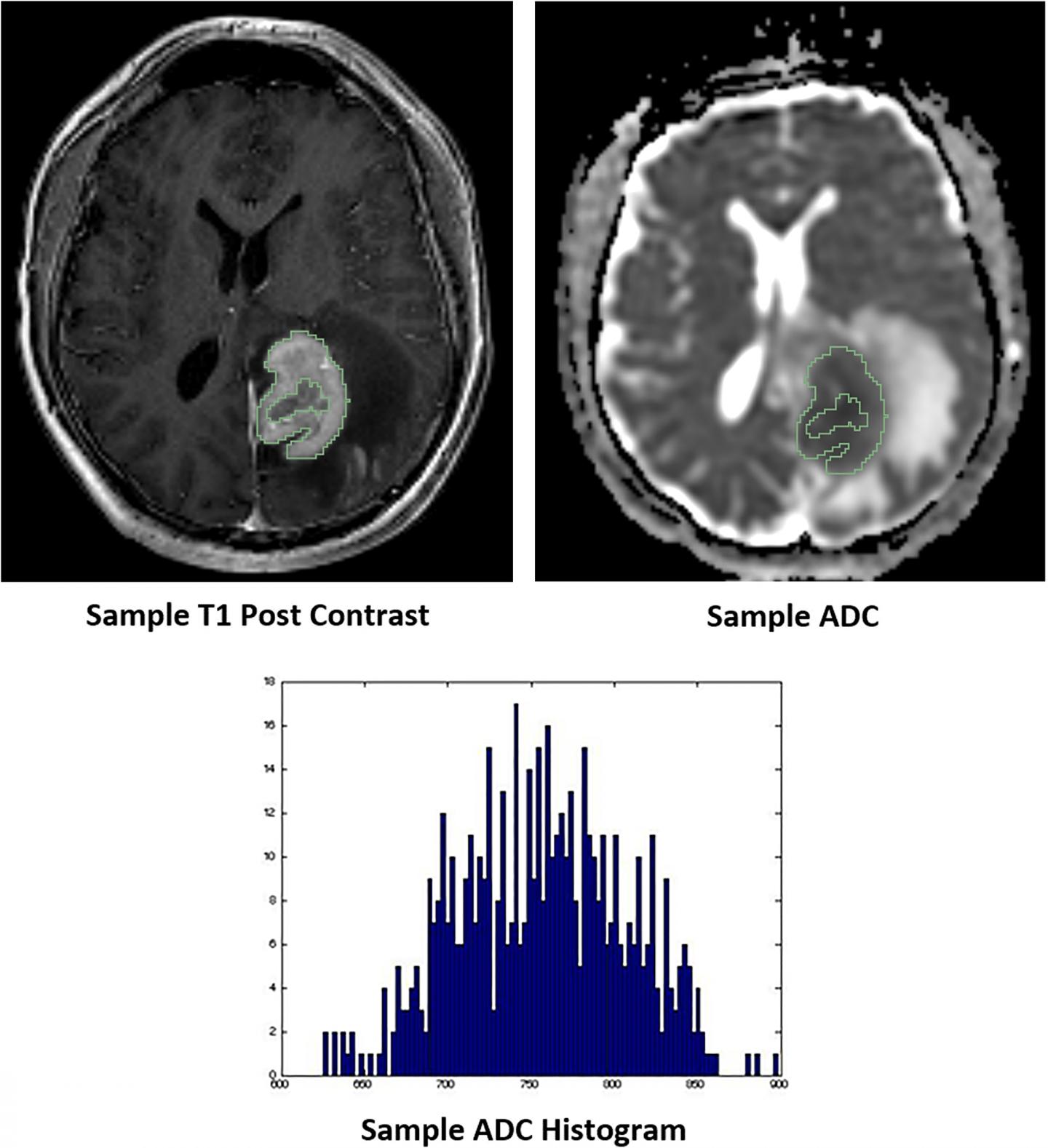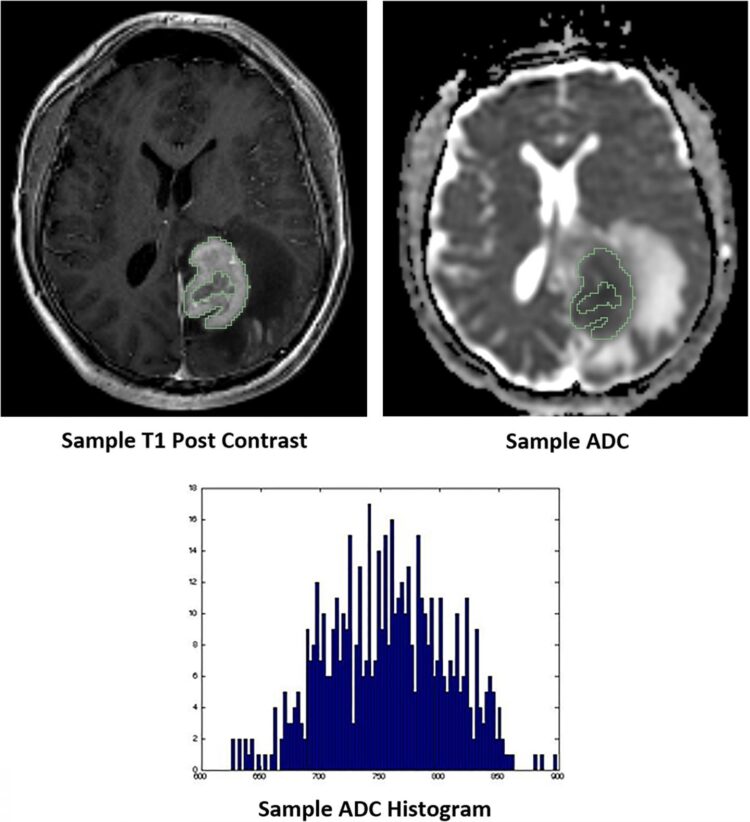The Oncotarget author’s hypothesis is that ADC values will inversely correlate with Ki-67 expression and that tumors with higher ADC values above the median will have improved OS and PFS

Credit: Correspondence to – Bilal Khan – [email protected]
The cover for issue 45 of Oncotarget features Figure 3, “Representative images of whole tumor volume segmentation of the co-registered T1 post-contrast sequence and apparent diffusion coefficient (ADC) map, yielding the corresponding ADC histogram distribution utilized for data analysis,” recently published in “Diffusion-weighted MR imaging histogram analysis in HIV positive and negative patients with primary central nervous system lymphoma as a predictor of outcome and tumor proliferation” by Khan, et al.
This authors reported that the aim of this study is to investigate the correlation between ADC parameters, Ki-67 expression, overall survival and progression free survival in PCNSL.
Selection criteria yielded 90 patients, 23 patients living with HIV and 67 immunocompetent patients.
In patients with available Ki-67 expression data, nADCmean, nADC15 and nADC75 inversely correlated with Ki-67 expression.
For PLWH, there was no correlation between ADC parameters and Ki-67 expression or clinical outcomes.
ADC histogram analysis can predict tumor proliferation and survival in immunocompetent patients with PCNSL, but with limited utility in PLWH.
Dr. Bilal Khan from The Baylor College of Medicine said, “Primary central nervous system lymphoma (PCNSL) is a rare subgroup of non-Hodgkin lymphoma confined to the central nervous system, with more than 90% of cases classified as Diffuse Large B-cell Lymphoma.“
Diffusion weighted imaging and corresponding apparent diffusion coefficient maps can provide a representation of the cellular microenvironment with several studies demonstrating that ADC values can predict tumor cellularity across various neoplasms, including lymphomas.
In a recent similar study of whole tumor histogram analysis in PCNSL performed by the authors of this study, multiple ADC parameters were inversely correlated with Ki-67 expression and associated with poorer OS.
However, tumor segmentation was performed using only the ADC sequence with the potential inclusion of intra-tumoral necrosis, hemorrhage or regions outside of the actual solid tumor that would otherwise have been excluded with contrast co-registration, ultimately providing a suboptimal representation of true tumor parenchyma.
The primary aim of this study is to more comprehensively evaluate the relationship between ADC calculations with tumor Ki-67 expression and clinical outcomes using a larger patient sample with the inclusion of PLWH and whole tumor segmentation with T1 post contrast co-registration.
The Oncotarget author’s hypothesis is that ADC values will inversely correlate with Ki-67 expression and that tumors with higher ADC values above the median will have improved OS and PFS.
The Khan Research Team concluded in their Oncotarget Research Paper that the role of MR in PCNSL historically has been the detection and qualitative evaluation of response to treatment.
DWI and derived ADC maps have been a well-established tool in neuroimaging, but the use of ADC histogram profiling has not been widely accepted in daily practice.
This data expands the role of conventional MR imaging by utilizing quantitative ADC histogram analysis to predict clinical outcomes and tumor expression of Ki-67, a biomarker for tumor proliferative activity, in immunocompetent PCNSL patients.
The role of using ADC as an imaging biomarker in PLWH may be limited.
Quantitative ADC histogram analysis should be strongly considered as part of the imaging protocol in the evaluation of immunocompetent patients with PCNSL.
###
Sign up for free Altmetric alerts about this article
DOI – https:/
Full text – https:/
Correspondence to – Bilal Khan – [email protected]
Keywords – primary CNS lymphoma, lymphoma, MRI, diffusion weighted, HIV
About Oncotarget
Oncotarget is a weekly, peer-reviewed, open access biomedical journal covering research on all aspects of oncology.
To learn more about Oncotarget, please visit https:/
SoundCloud – https:/
Facebook – https:/
Twitter – https:/
LinkedIn – https:/
Pinterest – https:/
Reddit – https:/
Oncotarget is published by Impact Journals, LLC please visit http://www.
Media Contact
[email protected]
18009220957×105
Media Contact
RYAN JAMES JESSUP
[email protected]
Original Source
https:/
Related Journal Article
http://dx.





